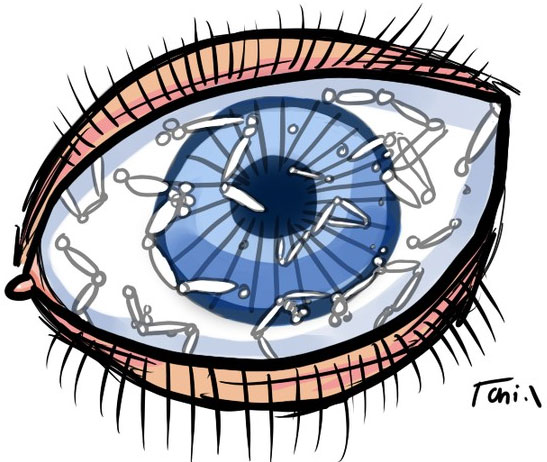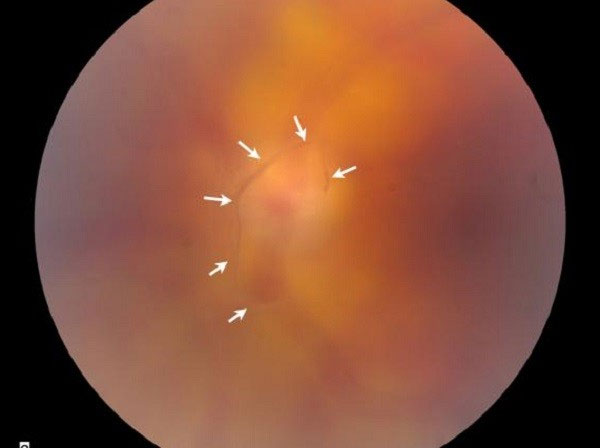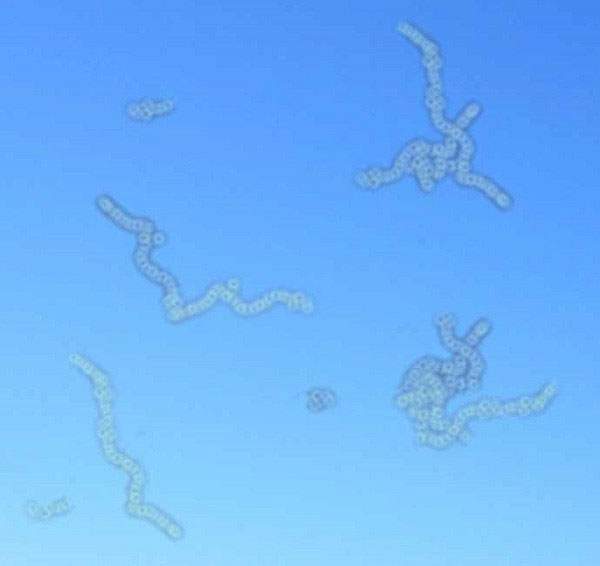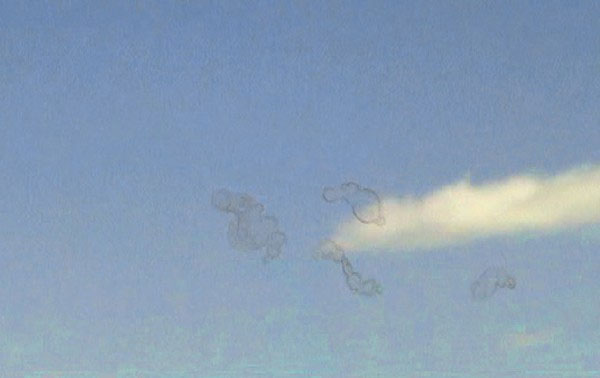Scientific explanation for the phenomenon of
Many of us encounter a strange phenomenon in the eyes, which is the appearance of ghosts, or twisting threads, thin wire like spider webs hanging in the eyes and moving in front of the eyes while looking one seat. Many people often call this phenomenon "fly ahead".

The image depicts the shadow, the winding thread moves in front of the eye while your eyes are still in place.
Several studies have shown that up to 70% of people encounter this case. So, what is the "immediate fly" phenomenon?

"Immediate fly" is essentially deposits or condensates in the glass colloid of the eye. These "flies" can be spots, straight or curved lines, with a thin string shape, or curved rings like an O or a C letter.

There are cases where the patient sees a blurry point but there are also people who see dozens of blurry spots in the eyes . These flying fuzzy spots can be present in one or both eyes.
When patients get this phenomenon, the first reflex is that they will try to see clearly by focusing on that point but this is very difficult to do because the image does not stay still but moves when we roll our eyes.

People with the disease will see more small, cloudy spots when looking at the clear sky during the day.
The ill person will see more blurry points when looking up at the clear sky during the day or looking at a bright background, blank paper. Sometimes, these "flies" hide in a corner, out of our sight.

A few images recorded small, cloudy spots of a person encountering the pathological phenomenon "fly ahead".
According to experts, this phenomenon is caused by aging, cloudy opaque inside the eye . The iris is a sphere, the front is covered by an inner layer called the conjunctiva. The cornea protrudes forward, transparent to reveal the inside of the eyeball, forming the iris.

The structure of the eyeball.
Behind the cornea in the order of entry is the hydrological block, crystal crystal (also known as glass fluid) and vitreous . Finally, lining the inside of the eyeball is the retina, where light acts on many conical and stick-shaped nerve ends.
Glass fluid is a solid, transparent gelatin block (like egg white) located between the lens and retina, accounting for about 2/3 of the eyeball volume.

Translates transparent glass and takes up most of the eyeball volume.
Glass fluid is a gene organization in which many very fine fibers are arranged in different directions but not joined. Over time, vitreous degeneration, large fluid, some tiny fibers of the vitreous fluid cluster together, forming tiny spots cloudy inside the glass.
These spots change in size, shape, refractive index and mobility.

Blur spots, cloudiness, continuous movement in the eyes such as "fly flies" are caused by the above spots creating shadows on the retina or due to refraction of light when passing through them. The degradation of vitreous fluid is interpreted as natural aging.

However, there are cases where vitreous fluid is infected, infected parasites or corneal eyes. So if you notice the occurrence of "fly-ahead" disease, you need to go to the center, the hospital examines the eyes more closely.
Depending on the condition, the doctor will conduct a saline supplementation pump to maintain the pressure of the eyeball or can handle blurring points to help you with less trouble in living.
- Mysterious deep holes in the jungle in Russia
- Scientific explanation of the phenomenon of flies afraid of water balloon bags
- Scientific explanation of the phenomenon of stone overlap mysteriously
- The extremely convincing scientific explanation for the phenomenon of eating is to be sleepy by office workers
- Video: The 5-year-old's explanation of the extremely easy-to-understand tornado
- Anxiety about an unusual sun
- Dream when dreaming? What monstrous phenomenon is this and the explanation of science
- The story of 'evil harassment' and scientific explanation
- The doctor explained the phenomenon that the baby has just born
- Scientific explanations of ghosts
- The scientific world is
- New explanation about the phenomenon of men who breastfeed their babies
 'Fine laughs' - Scary and painful torture in ancient times
'Fine laughs' - Scary and painful torture in ancient times The sequence of numbers 142857 of the Egyptian pyramids is known as the strangest number in the world - Why?
The sequence of numbers 142857 of the Egyptian pyramids is known as the strangest number in the world - Why? History of the iron
History of the iron What is alum?
What is alum?